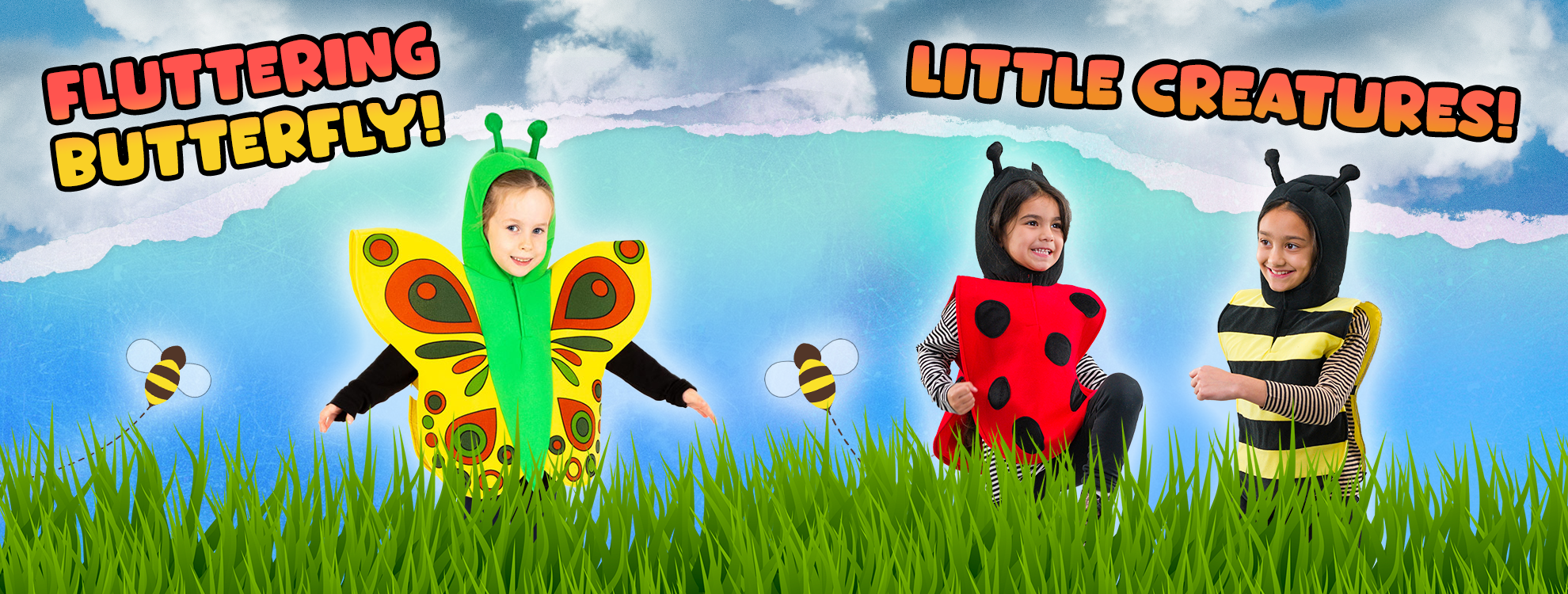Life Around Us: Flying Out to Play Blog!

8 March 2023
Life Around Us: Flying Out to Play
Whilst exploring nature, children will come across some of its key inhabitants, insects! It is important to understand how these small, yet vibrant creatures help life around us develop. Well, in this blog we will learn about how three different wonderful flying insects play a role in the care and survival of plants in the eco-system, much to the delight of many a farmer!
With more than 20,000 species, Bees are found in every habitat which has insect-pollinating plants. These bee-autifully striped wild Bees play a key role in pollinating farmers crops. Feeding on nectar and pollen, they are drawn to the smell and colour of flowers. Whilst collecting their food, a bee’s fur gets covered in pollen which is transferred to the next flowering plant they visit, completing the pollination cycle. When they have found a supply of food, they share their knowledge with the hive. These fuzzy little insects cleverly use the sun and the earth’s magnetic field to perform a cute ‘waggle dance’ to tell other Bees the exact location of the food source! Farmers love when these busy bees visit as pollination improves the health and quality of their crops. The more the merrier!
With the iconic black and yellow horizontal strips of the tabard and foam antenna on the hood, children will bee positively buzzing with excitement to play in our Bee costume. Plus, the addition of the iridescent silver foil wings on the back are simply bee-witching to all who want to fly around exploring nature!

Teaching us that change is not always a bad thing, Caterpillars go through a full metamorphosis to transform into a majestic Butterfly. Whilst exploring the outdoors, butterflies can be found enjoying the sun as they need a body warmth of at least 30⁰C to be able to eat or flutter around. Butterfly’s use their antennae which smell, feel, and hear to search out flowers with nectar to feed on. Like our humble bee, when they feed, a butterflies legs get covered in pollen which they transport over large distances to other plants. But what makes these flying insects so magnificent are the bold and brilliant pattern of their wings! Often with different patterns on the top and bottom of their wings, these patterns allow butterflies to camouflage themselves and deter hunting animals.
Watch children blossom into wonderful little butterflies in Pretend to Bee’s eye-catching Butterfly Tabard. The importance of a butterfly’s antennae and body is highlighted in a bright green, and an array of vibrant colours create a striking pattern on the wings, allowing them to standout on any background for play. Although our butterfly costume won’t give kids the ability to fly, they sure will help their imagination soar!
_________
Being considered a sign of good luck, good health and plentiful crops, Ladybirds are one of the most well-loved beetles. Like Butterflies, Ladybirds also go through metamorphosis to enter the adult stage of their life cycle, where they develop the eye-catching use of bright colours and spots. With over 5,000 distinct species of ladybirds having been discovered globally, these distinctive characteristics can be used to indicate which species they belong to. The UK’s most common being the seven-spot ladybird! Any gardener or farmer loves to encourage Ladybirds to visit their crops and green spaces as a Ladybirds main source of food are Aphids. Aphids damage plants and disrupt their growth, so having ladybirds in the area can naturally protect plants health without the use of chemicals!
Children will be ready to learn about the amazing role of insects, as they play in our Ladybird costume. The bright red body and black applique spots will have little ones picturing themselves protecting nature and putting a smile on the face of anyone they run past!


